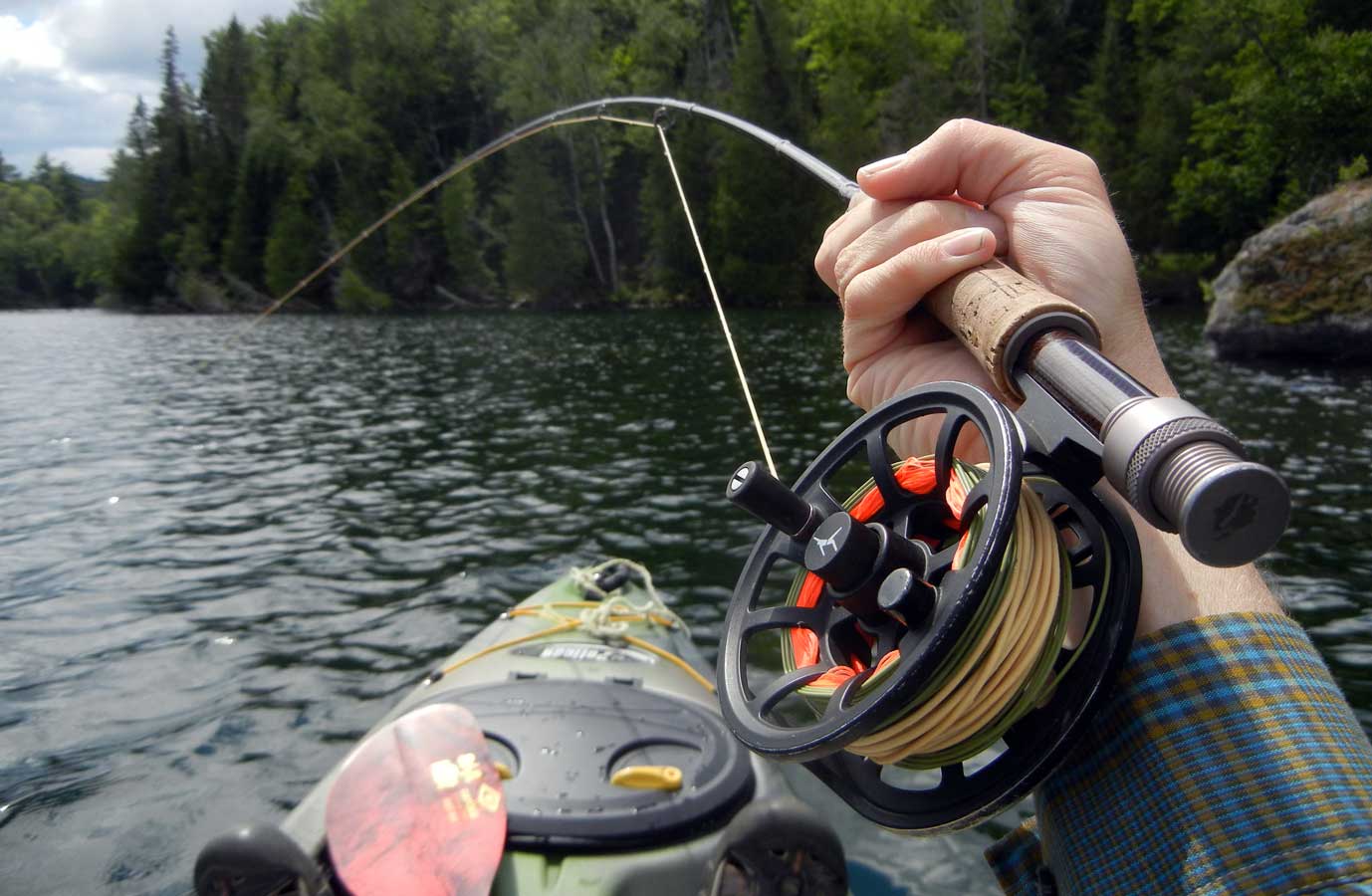Spring Bass Wake Up Early

Getting towed around by a spring smallie | photo by Craig Waythomas
It’s hard to jump the gun on a bass and panfish pond.
Spring starts early in the ponds — even in Wamic, Oregon, which is nestled in the mixed forest of Ponderosa Pine and oak trees just a short drive from the still-snowy eastern slopes of Mount Hood.
A sunny, 60-degree day pours heat into the muddy shallows of my favorite 30-acre farm pond. Nice bass — and outsized bluegill — quickly move into the warmer water.
After a few days of warmer weather, the smaller, lust-addled male bass — ranging from 10 inches to 14 inches or so — decide it’s time to stake out territory and fan dinner-plate-sized nests in the shallows.
The larger females — hulking and hungry — are lurking in the deeper water just offshore. They’re sucking down little bluegill, leeches and bugs while eggs ripen in swollen bellies.
All of this starts in April, well before the bankside willows and hawthorn trees leaf out. The nearby apple orchard hasn’t bloomed yet.
But it’s spring in this pond — and in almost every Northwest pond. I lived in Washington’s South Puget Sound for 14 years, and I always found staging male bass in the local ponds — most of them in public parks — by the first week of April.
There are bass ponds in city parks, golf courses, out in farm and orchard country and in state parks. This early spring angling is often some of best warm-water fishing of the year, and I rarely see other anglers out there — even if the winter was long, dark and cold.
Little ponds warm up much faster than big lakes.
In the Rain
Still, I had low expectations when I waded into that 30-acre farm pond last weekend. Warm weather bathed the pond all week, and I was sure that some bass and bluegill had moved into a shallow, muddy bay that turns into a wanton, violent spawnfest by early May.
But it was Saturday, so naturally a cold front oozed over the landscape Low, dark clouds hid Mount Hood from sight — and rain spattered on the smooth, glassy pond water.
Spring clouds and gentle rains are great for trout angling, but even a small drop in air temperature can send spring largemouth bass into a sulky, deep-water funk.
I left the the battered old aluminum skiff on the bank and slowly waded into the shallow, cloudy water. I tied a small, black wooly bugger — on a size 12 Tiemco 200 hook — and made casts to half-sunken logs and weed islands.
I was trying to give the bass something big enough to be interesting — but not too big for the big bluegills. There are two-pound ‘gills in this pond, and I love hooking those big frisbees. And these pre-spawn fish are often spooky in shallow water — even if it’s a little cloudy.
It felt good to cast the 6-weight and watch the line unroll over the water. I let the fly sink for a few seconds before I started twitching it in.
The line stopped on the first retrieve, and I set the hook — into some long, stringy weeds. This flat is about two feet deep, so the weeds are always there.
A hour later, I hadn’t gotten a bite. Maybe spring, like most of our lives these days, was on hold.
Following a Hunch
I got out of the water and sat on the overturned skiff. The rain gently rattled on the metal and dripped off the tree branches. It felt so good to be out there, in a world that smelled of wet mud, green grass and decaying pond weeds.
Still, I couldn’t quite believe that eight hours of colder weather and some rain pushed all the fish off the shallows. The pond water felt warm on my hands.
I’d tried small and subtle, so maybe it was time to try something a little bigger — maybe a little flashier. Something like a small, black, cheap foam popper with wiggly rubber legs.
I love to throw big, gaudy deer-hair poppers on this pond — hell, any pond — but a big commotion didn’t fit the rhythms of this quiet, moody day.
I tied on the little black popper and eased back onto the flat.
The little black popper doesn’t even really pop. The foam head just digs into the water a little when I pull the fly line. Then the popper bobs and quivers for a few seconds. I let the tiny ridges of water calm down — and then jerk the line again.
I like black poppers in cloudy water because they are easy for the bass to see. Don’t believe me? Go outside on a cloudy day and hold a black fly to the sky. Then hold an olive-green or tan fly to the sky. The black fly really stands out.
Fishing a popper is always fun. It’s right out there where you can see it, and you can play with volume, speed and pace. Early spring is rarely a great popper time — but it felt good to try something new.
I kept casting and hoping.
I don’t know how many casts it took before I accidentally hooked a bass.
I do remember how it happened. A flock of 10 or so Canada geese passed over the pond — and then wheeled back for another look. After a flurry of urgent honks, the big birds cupped their wings and skimmed onto the water on the other end of the pond. I hadn’t seen geese on the pond since last November.
I looked back at my popper, and it wasn’t there.
I set the hook, and a foot-long bass boiled at the surface. My heart jacked into high gear. A fish. Finally.
I slid the bass, fat and gleaming, onto a weed island. The barbless hook came right out, and the bass rattled off the weeds and vanished.
A few casts later, another little male bass gently sucked down my quivering popper.
The rain kept hissing down, and I kept on inching through the glassy water, casting and making that little popper do a little dance.
Spring is here. I bet it’s here where you live as well.











